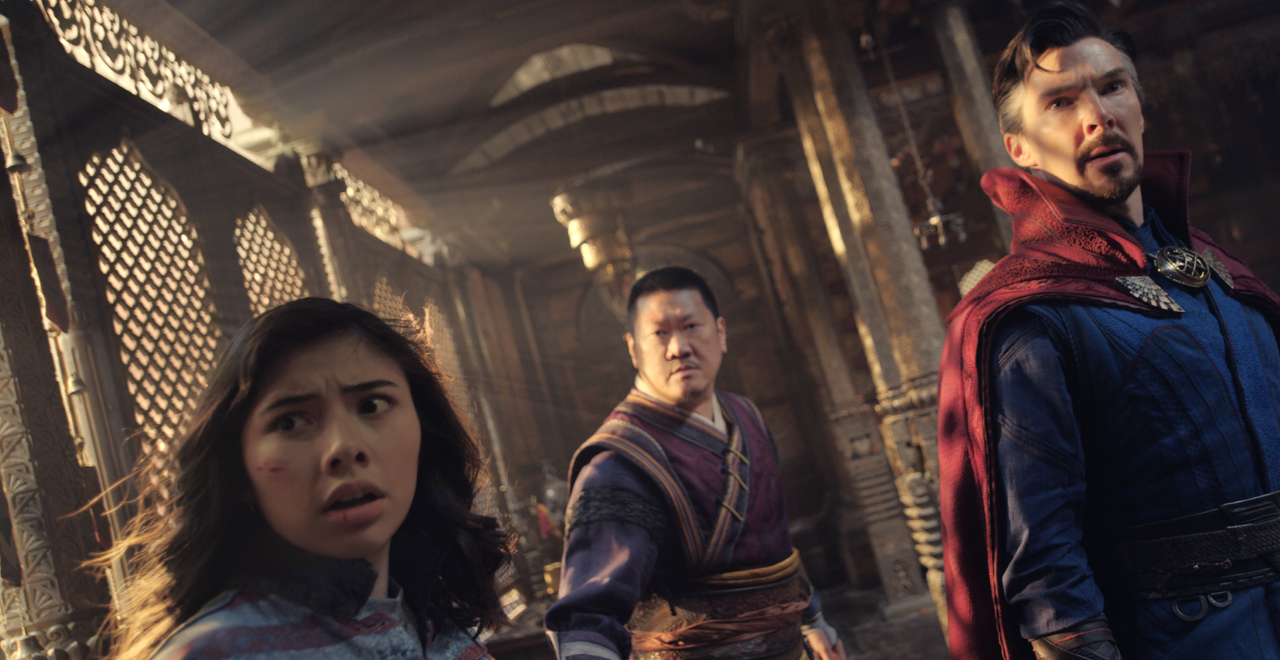Warning: Spoilers ahead!
Released late last week, Doctor Strange in the Multiverse of Madness is full of Marvel’s usual quirks: playful banter, sly jokes, and surprise cameos all brought together with an action-packed plot. However, Multiverse of Madness separates itself from its predecessors by being the first Marvel project to be classified as a horror film. With a rating of M in Australia, the film manages to pay a loving tribute to horror flicks of the past whilst remaining within its limitations.
Director Sam Raimi is no stranger to both superhero and horror movies, directing fan favourites such as the original Spider-Man trilogy and The Evil Dead. Perhaps this is why linking the two felt so seamless. The film follows Doctor Strange and new hero America Chavez as they race through the multiverse to stop Wanda’s new alter ego, the Scarlet Witch. As an avid Marvel fan who struggles to stomach horror and scary movies, Multiverse of Madness was not only watchable but enjoyable. It paired the best elements of both, switching between jump scares and graphic deaths to Easter eggs and comedic timing.
Multiverse of Madness pays tribute to horror films of the past by using classic horror tropes. The suspense of a string quartet as characters sneak around trying to find or avoid their enemy. A fast-moving camera zooming towards a character’s face. It even included shots of actors looking directly into the camera and a subtle nod to Carrie when Wanda emerges from a fire covered in machine oil and blood after a killing rampage. These moments were shocking and surprising; however, they did not feel extreme nor out of place. In an interview with Rolling Stone, Raimi stated that ‘there’s always ways to up the game’ when it comes to making films. It is a testament to his creativity and skill that he was able to achieve this in a Marvel film, a franchise that is notorious for its loyal fanbase and formulaic movie structure.
Of all the sub-genres within horror, a particular emphasis was placed upon body horror. It is introduced from the beginning of the film, where the audience is shown an eyeball torn out of a monster and Doctor Strange’s corpse mere minutes apart. From here the theme continues to reappear in subtle and extreme scenarios, from Doctor Strange sprouting a third eye and Scarlet Witch contorting her body in unnatural angles to fit through a tight opening. So, why body horror? Stephen Strange is a doctor who discovered his powers after a car accident left him with irreparable damage to his hands. His injuries and subsequent scarring are not hidden from the audience, making the link between body horror and Doctor Strange not so distant. Doctor Strange was also Marvel’s most playful and psychological project at the time of its release, purposely messing with the audience’s mind in terms of plot and cinematography. Leaning into horror and body horror for its successor maintains that mind-bending element whilst also being exciting and innovative.
Multiverse of Madness is another triumph for Marvel and Raimi. Underneath the merging of genres is beautiful cinematography and powerful performances. Yes, there is some clunky dialogue and plot holes, but the film is a welcome addition to the ever-growing MCU.
Article written by Zoe Perks
Header image sourced from IMDB


